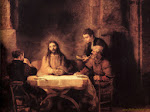I rate this film overall as a good film worth watching.
I enjoyed the acting by Morgan Freeman, who played the main character, Bilbo Baggins in a thoughtful manner, and subtly when called for. A host of actors joined in recreating roles they played earlier when Peter Jackson filmed the follow-up story, "The Lord of the Rings, in a previous film trilogy. They included Ian McKellan (as Gandalf the Grey), Andy Serkis (as Gollum), Kate Blanchett (as Galadriel), Hugo Weaving (as Elrond), Christopher Lee (as Saruman the White), Ian Holmes (as Old Bilbo Baggins), and Elijah Wood (as Frodo Baggins). Having played these parts in three previous films, these actors honed their roles, and deliver wonderful performances.
 |
| The riddle game b/w Bilbo & Gollum |
However, I thought the film dragged at some points, which seemed a bit odd. When Peter Jackson filmed the first film, "The Fellowship of the Ring," in "The Lord of the Ring" trilogy, over a decade ago, the film had great pacing. In this first part of "The Hobbit" film trilogy, the pacing seemed off. Great filmmakers have a good sense of pacing for a film. It's somewhat disappointing to see a filmmaker who had a great sense of pacing begin to lose some of it over the years. For example, the scenes at Bilbos' home with the dwarves seems to go too long. The same goes for the scene with the battle of the stone giants in the Misty Mountains, as well as some other scenes.
It's telling that while the "Fellowship of the Ring garnered 13 Academy Award nominations, winning 4 Academy Awards, "The Hobbit: An Unexpected Journey garnered 3 Academy Award nominations, with none winning an Academy Award.
Yet, overall, I enjoyed the film, and highly recommend it.
If you are interested in differences between the book and the film, see my post, The Hobbit (the films).
If you are interested in my review of the book, see my post, The Hobbit (the book).
The Hobbit: The Desolation of Smaug
The Hobbit: The Battle of the Five Armies






















